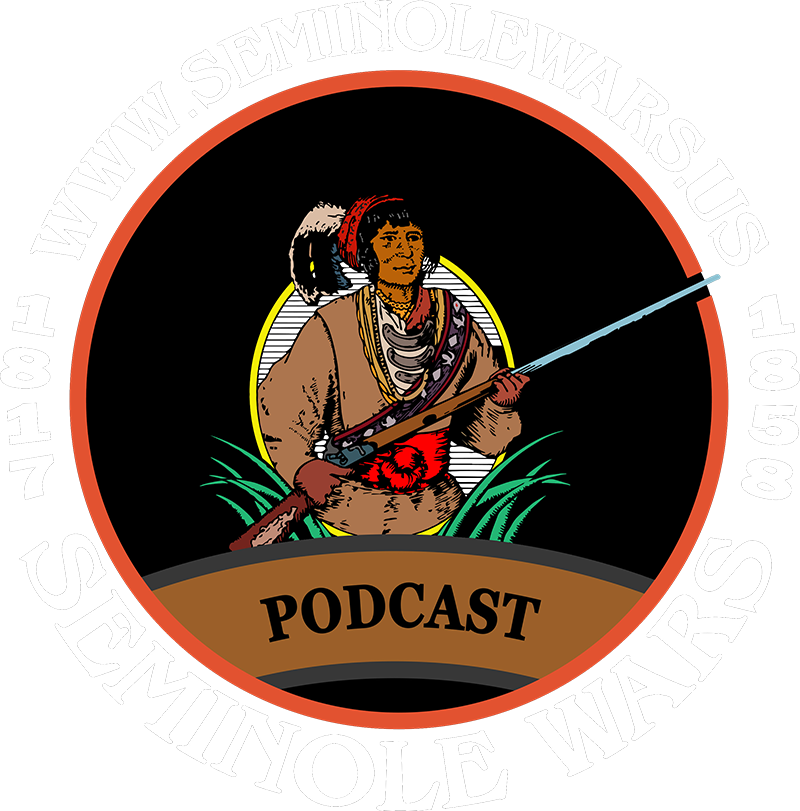The history of the Black Seminoles is an often overlooked yet incredibly important part of Florida’s past. Their contributions to the state’s history, culture and economy have been invaluable and deserve to be explored and celebrated.
Introduction to the Black Seminoles
The Black Seminoles are a group of African Americans, Native Americans and Seminoles of mixed-race descent. Their history in Florida dates back to the 18th century when African slaves began to escape from plantations and join the Seminole Nation. Over the years, the two groups intermarried and formed a unique community that was distinct from both African American and Native American culture. By the mid-19th century, the Black Seminoles had become a powerful and influential force in Florida and were involved in a number of conflicts and skirmishes with the U.S. government.
History of the Black Seminoles

The Black Seminoles first rose to prominence during the Second Seminole War, which was fought between the United States and the Seminole Nation from 1835 to 1842. The conflict began when the U.S. government attempted to forcibly remove the Seminoles from their land in order to make way for white settlers. The Black Seminoles, who were allied with the Seminoles, played a crucial role in the war effort. They served as warriors and spies, providing invaluable intelligence to the Seminoles and helping to keep them one step ahead of the American forces.
The Black Seminoles also provided a vital source of food and supplies to the Seminoles during the war. In addition, they served as negotiators and mediators between the two sides, helping to bring about a peaceful resolution to the conflict. Despite their efforts, the war ended with a U.S. victory and the Seminoles were forced to relocate to reservations in Oklahoma.
The Second Seminole War
The Second Seminole War was one of the bloodiest and longest conflicts in American history. It lasted for seven years and saw U.S. forces launch a series of campaigns and attacks against the Seminole Nation. The most famous of these campaigns was the “Dade Massacre”, which saw U.S. troops attacked and killed by a combined force of Seminoles and Black Seminoles.
The war also saw the U.S. government enact a number of policies that sought to weaken the Seminoles and their allies. These included the passage of the Indian Removal Act, which allowed the U.S. government to forcibly remove Seminoles from their land, and the establishment of Fort King, a military base in central Florida that was used to monitor and control the Seminoles.
The Role of Fort King in the Second Seminole War
Fort King was established in 1827 as part of the U.S. government’s strategy to contain and control the Seminoles during the Second Seminole War. The fort served as a major supply depot and military base for U.S. forces and was the main staging ground for their campaigns against the Seminoles. It also served as a prison for captured Seminoles and their allies, including the Black Seminoles.
During the war, Fort King was frequently targeted by Seminole forces and several major battles were fought there. The most famous of these was the Battle of Fort King, which saw a combined force of Seminoles and Black Seminoles launch a daring attack on the fort in 1836. Although the attackers were eventually repulsed, the battle was a major victory for the Seminoles and demonstrated the strength and courage of the Black Seminoles.
The Impact of the Second Seminole War on the Black Seminoles
The Second Seminole War had a devastating impact on the Black Seminoles. Many were killed in the battles and skirmishes, while others were forcibly removed from their homes and relocated to reservations in Oklahoma. The war also had a major impact on their culture and language, as many of the Black Seminoles were unable to take their traditions with them when they were relocated.
Despite these hardships, the Black Seminoles persevered and continued to fight for their freedom and rights. They eventually won their freedom in 1858 with the signing of the Treaty of Eufaula, which allowed them to remain in the Seminole Nation.
Exploring Fort King Today
Fort King is now a National Historic Site and is open to the public. Visitors can explore the fort’s historic buildings and grounds, which provide a glimpse into the history of the Second Seminole War. There are also several interactive exhibits and activities, such as a simulated battle between U.S. forces and Seminole warriors.
The fort also houses the Fort King Museum, which is dedicated to the history of the Seminoles and the Second Seminole War. The museum features a variety of artifacts, photographs and other items related to the war, as well as a number of interactive exhibits. Visitors can learn about the history of the Seminoles and the Black Seminoles, as well as the role that Fort King played in the war.
Preservation Efforts for Fort King
In recent years, a number of preservation efforts have been undertaken to ensure that Fort King and its legacy are remembered. In 2014, the Fort King National Historic Site was designated a National Monument by President Barack Obama. This designation provides additional protection for the site and ensures that its history will be preserved for future generations.

In addition, a number of local organizations have also been working to preserve Fort King and its legacy. The Fort King Heritage Foundation is a non-profit organization that has been working for over 30 years to protect and preserve the fort and its history. The organization also hosts a number of educational programs and events to help educate the public about the fort’s history and importance.
Currently, work is in progress to re-create the blacksmith’s shop, and they have recently completed a Seminole Chickee.
Resources for Learning More About Fort King
For those who wish to learn more about the history of the Black Seminoles and Fort King, there are a number of resources available. The Fort King National Historic Site offers a variety of educational programs and tours, as well as a research library. The Fort King Heritage Foundation also offers a variety of educational programs and resources, including a comprehensive website.
Another great website to learn more about Fort King is https://www.legendsofamerica.com/fort-king-florida.
In addition, a number of books and articles have been written about the Black Seminoles and the Second Seminole War. These include Black Seminoles in the Bahamas and Florida by Jane Landers, The War of 1812 by Donald R. Hickey, and The Seminole Wars: America’s Longest Indian Conflict by John K. Mahon.


